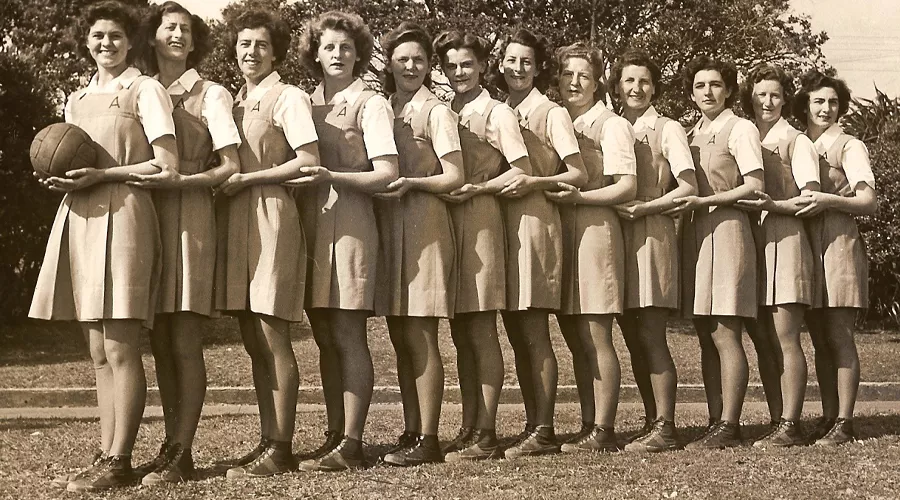Long before Ellyse Perry, and Summer/Winter Olympics trailblazer Jana Pittman, there was Myrtle Baylis. As the first woman to represent Australia in two sports - netball and cricket, and in the same year - the 20th century cross-code pioneer would surely approve of the 2020 International Women’s Day theme #EachForEqual.
Way back in a very different time, war and circumstances limited the representative opportunities for Baylis, the daughter of Western Bulldogs football Hall-of-Famer Johnny Craddock. After earning an unprecedented pair of debut international appearances in different sports just five months apart, Myrtle would go on to play six cricket Tests and represent Australia in netball three times.
Officially, the latter was still called women’s basketball until 1970, and in an interview with The Age before her 2012 induction into the Netball Australia Hall of Fame, Baylis recalled that in her era, players also wore numbers instead of positional letters and routinely had to pay their own way.
That included on Australia’s first-ever international tour - to New Zealand, where, at a racecourse, of all places, Baylis was part of just the second-ever trans-Tasman Test match. There, the nimble lefty with the low-release one-handed shooting style typical of the times helped the tourists to a 27-16 win.
Their Kiwi opponents played in boots and thick black tights, having to adapt from a domestic game of nine-a-side. In the 70-plus years since, it is not just the enduring rivalry, but the sport itself, that has come a long way.
For Baylis, it was already so much further than she had ever been. “I’d never dreamed of going anywhere, let alone going there,’’ said Baylis, who had not previously left Victoria. “Before you decided to go you had to give (the national association) so much money, and then you had to give the rest.’’
Myrtle remained interested, and involved, long after her retirement. She was selected in the Australian Netball Team from 1946-49 and 1952-54, playing in the only three international Tests between 1939-1955, including as captain in 1953.
At state level, too, she was an accomplished goal attack - or “goalie”, as she liked to say - for Victoria from 1937-1954, cycling from her home in Sunshine to Royal Park for training each Sunday. In 2000, she was named alongside the likes of Sharelle McMahon, Joyce Brown and current Vixens’ coach Simone McKinnis in the Netball Victoria Team of the Century.
“I think it's pretty good now,'' Baylis said when asked for her thoughts on what the sport had become. “It's a different game altogether. There was no contact allowed, or anything, when we played. And we thought we were fast, but the ones of today … oh!
“It was very small. Nobody used to come and watch you. You never used to see a lot of people, although in Country Week, the country girls used to come down to Royal Park and play. That was a big deal, that. Yes.''
Meanwhile, the seven-handicapper in golf was also an elite cricketer, the 30th Australian woman to be capped, and described by Wisden as a bowler of “unwavering patience and accuracy”, who took 16 wickets at an average of 19.62 with her economical left-arm medium-pace and Chinamen deliveries.
“It was never heard of, getting into the Australian team in two sports,'' Baylis told The Age. So was she famous in her day? “Oh, I s'pose I was - I don't know,'' she laughed. “It's a lot different now.’’ And her favourite sport? “I loved ‘em both!’’
If not one, it was the other, Baylis recalled. “I just loved it. Wherever there was a game on, I’d get on the bike and away I’d go, because you never had a car in those days.’’
Following her passing in 2014, recognition came from both the netball and cricket communities, while her only child, son Doug, paid tribute to the woman who raised him after being left widowed at a young age. “She enjoyed and embraced life,’’ Doug told a local newspaper. “It didn’t matter what it was, she always had a go at it, and was very successful.”
Yes. #EachForEqual works nicely. Happy International Women’s Day.
Written by Linda Pearce
